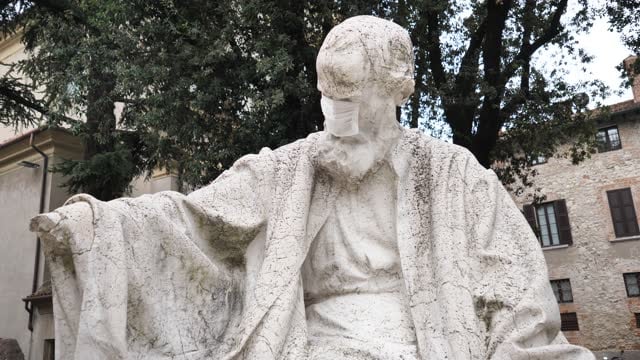Niccolo Fontana, now famously known as the esteemed mathematician Niccolo Tartaglia, became one of the first mathematicians to provide a general cubic equation. When Tartaglia involved himself in a dispute with Antonio Fior, he solved all the equations given to him by Fior through the cubic equation he discovered in preparation for the competition at Bologna University.
When mathematician Niccolo Tartaglia discovered a general cubic equation that can be used to solve certain formulas, he turned the equation into a poem to fend off credit-grabbing mathematicians.
Niccolo Tartaglia’s Origin
Born during the 1500s in Brescia, Italy, Niccolo Fontana, who we now know as Niccolo Tartaglia, emerged from a family struggling to survive. With an older and younger sibling, Tartaglia’s father, Michele Fontana, had to work as a message carrier to support and provide for his family.
When robbers killed Michele, the Fontana family’s future became entirely dependent on their mother. Brescia continued to suffer, and by 1512, Gaston of Foix’s French army attacked the barely defended city. When the Fontana family sought shelter at a cathedral, Gaston’s soldiers forced their entry, with one of them slashing Niccolo’s head five times with a sword, leaving the 12-year-old boy hardly alive.
The blows of the soldier left Niccolo’s head heavily disfigured; with the love and care of his mother, he survived and became known as Niccolo Tartaglia, which meant stutter in the Italian language, reflecting his struggle with speech.
In the cathedral, in front of my mother, I was given five murderous wounds, three on my head (each of them exposing my brain) and two on my face… One of the wounds cut my mouth and my teeth, breaking my jaw and palate in half. This stopped me from talking except in my throat the way magpies do.
Niccolo Tartaglia
With barely any money, the 12-year-old Niccolo only had weeks of free schooling for his educational attainment. With the education he received, he taught himself to read and showed a talent for calculations. Given Niccolo’s unusual excellence in mathematics, his mother immediately asked for the aid of Lodovico Balbisnio, a wealthy sponsor, to financially support his education in Padua.
When he reached 34, he settled in Venice to become a mathematics professor publicly and privately. (Source: Famous Scientists)
Tartaglia’s Cubic Equation
Niccolo Tartaglia’s mathematic legacy established itself when he won a mathematics competition at Bologna University in 1535. Within the match, he portrayed the use of a general algebraic formula to resolve cubic equations. (Source: Famous Scientists)
Tartaglia soon met Antonio Fior, a student of Scipione dal Ferro, who only knew how to solve cubic equations through the x3 + ax = b given by dal Ferro himself. It was not long before conflict between Tartaglia and Fior arose; they both agreed to resolve the dispute by giving the other mathematician an equation to solve with their cubic solution. As Fior lost to Tartaglia, Tartaglia solved all the equations with the cubic equation he discovered.
Instead of publishing his ascertained cubic equation, Tartaglia converted the equation into a poem that contained 25 lines to ensure that no other mathematician would steal it. (Source: Story of Mathematics)
When the cube with the cose beside it
Equates itself to some other whole number,
Find two others, of which it is the difference.
Hereafter you will consider this customarily
That their product always will be equal
To the third of the cube of the cose net.
Its general remainder then
Of their cube sides, well subtracted,
Will be the value of your principal unknown.
Friedrich Katscher’s English Translation
(Source: Mathematical Association of America)
